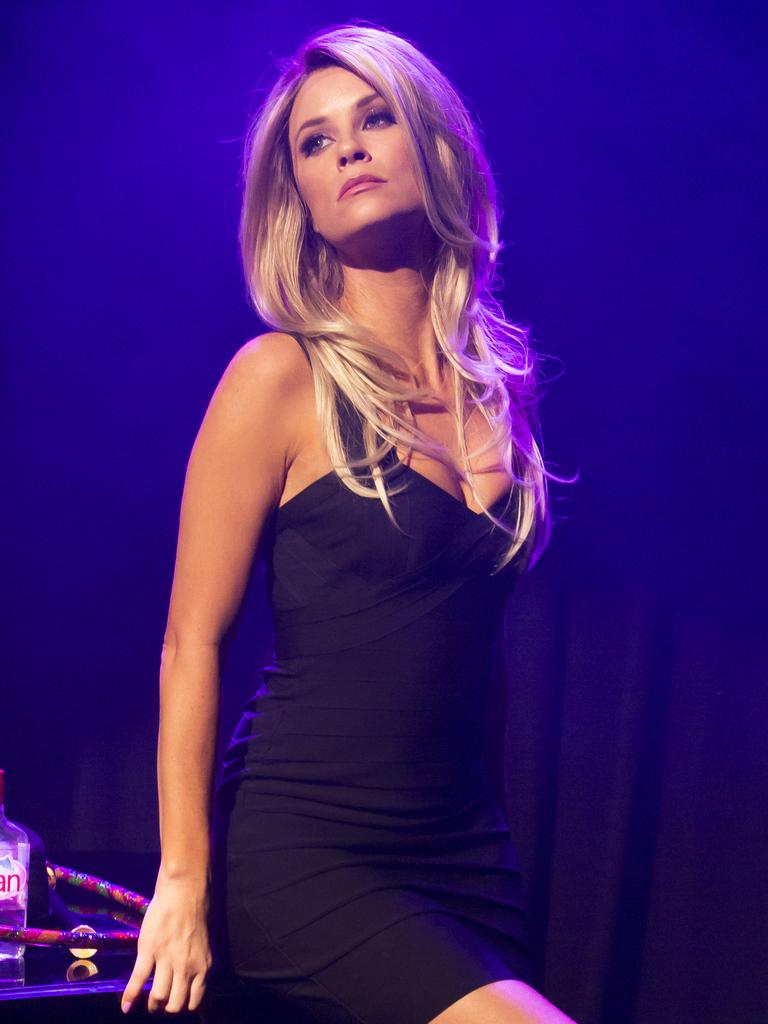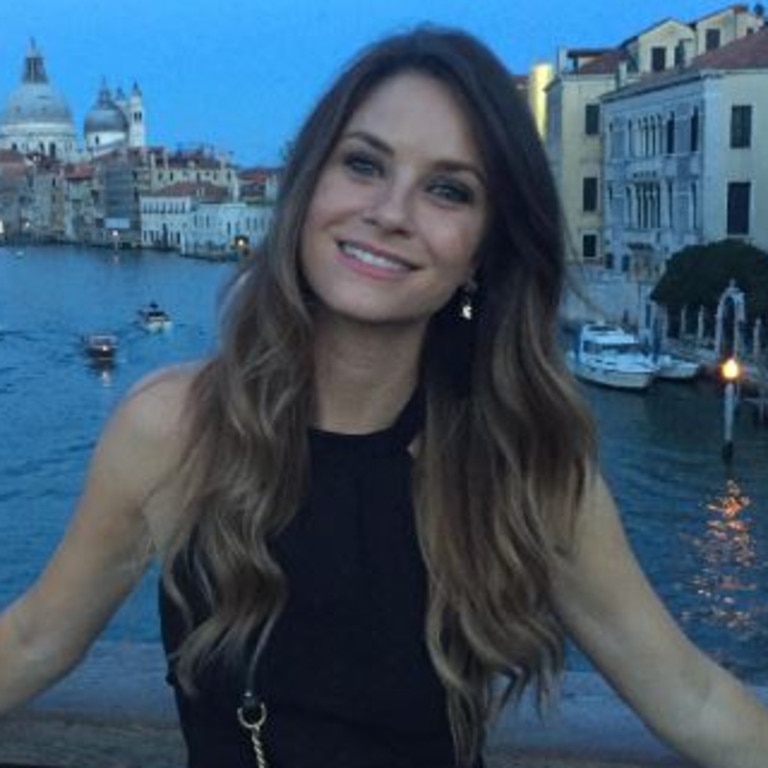Christie Whelan Browne reveals what is it like to live with endometriosis
Aussie actress Christie Whelan Browne has revealed the horror discovery doctors found “wrapped around her bowel” and the nightmare she endured for years.
Until her mid-20s, Australian actress Christie Whelan Browne assumed the blinding pain she experienced every month was just something she had to put up with.
Periods were not something that was really discussed among her friend group, with the now 42-year-old telling news.com.au it was still seen as a “sort of embarrassing thing”.
“I just dealt with it. It’s just something I’ve put up with it,” she said.
Christie, who starred in Neighbours and has been one of the country’s top musical theatre performers since 2005, would have near constant pain during her period. She’d suffer excruciating cramps, and shooting back and leg pain.
It wasn’t until she was 26 and had a cyst rupture on one of her ovaries - triggering severe pain - that she was finally diagnosed with endometriosis, a disease where tissue similar to that which normally lines the uterus grows in other parts of the body, usually the pelvic region.
It is a chronic condition and, while there are treatments available to help patients manage the disease, there is currently no cure.


Medicare is failing women and it’s About Bloody Time things changed. Around one million suffer from endometriosis. There is no cure. Help is hard to come by and in rural or regional areas, it’s virtually impossible. We are campaigning for longer, Medicare-funded consultations for endometriosis diagnosis and treatment. Read more about the campaign and sign the petition here
“I think the bursting of the cysts was just a catalyst for me to realise something wasn’t right,” Christie said, adding that she felt relieved to finally have a diagnosis.
“You know there’s something wrong with you and often people are gaslit and told that’s just what a period is, especially with the constant back pain.
“My pain was down my front, my back and my legs pretty much the entire month. I mean, that’s not normal.”
The actress said she was lucky to have a general practitioner who believed her, validation an overwhelming 54.4 per cent of women surveyed by news.com.au didn’t have when seeking treatment for endometriosis.
Her GP immediately booked her in for a laparoscopy, surgery used to identify and remove endometriosis tissue.
After waking up in the hospital, Christie’s first question was, “Did you find it?”.
“You’re often told that the only way to find out if you have endo is to have a surgery and that is an extreme path to take. So women are often left wondering, is this really as bad as I think? Should I go through an invasive surgery?” she said.
“So mainly what they want when they wake is validation that what they were feeling was real.”

She was told she had Stage 4 endometriosis - the worst possible diagnosis - but it was found “wrapped around” her bowel, so was unable to be removed.
After being told this, Christie was put on a strong contraception drug to help manage her symptoms and went on with her life for eight more years, “ignoring” the disease as best she could.
Truth behind star’s smiling holiday photo
It wasn’t until she turned 35 and decided she was ready to become a mother that Christie was faced with another insidious side of endometriosis: infertility.
During a 2016 trip to Europe, she and her husband, fellow actor and dancer Rohan Browne, decided to start trying for a baby.
Sharing a photo to Instagram from the trip, where she’s seen smiling in Venice, Italy, Christie revealed that at the time the photo was taken she had believed she was pregnant.
“We had made the decision to ‘try’ for the first real time on this trip and I was naive enough to believe that meant it would work first go. I had timed it all out and had the whole thing sorted,” she captioned the photo.

However, she would soon be told she was “infertile” and the tiredness she felt on the trip was “just carb overloading and her husband making her walk until her feet were swollen.”
The actress said after about six months of trying, she went to a specialist and was told her egg count was “essentially non-existent”.
“I remember being told I was ‘infertile’. Such an ugly word, with such heartbreaking ramifications,” she said.
“I always had a feeling that maybe I would struggle but that word felt very brutal. Little did I know that the word was nothing compared to the journey that would follow.”
During her IVF journey, Christie went through multiple egg retrievals only to have her heart broken again each time she was told they hadn’t been able to retrieve any.
After three years she was preparing to go down the path of finding an egg donor when a specialist urged her to try one more retrieval.
“She was very confident in her ability and she got me one egg, which created one embryo, which is my son. That is a miracle,” she said.
“It was a low-grade embryo. By all accounts it shouldn’t have worked and it did.”
Her son, Duke, was born on March 1, 2021 and has just celebrated his third birthday.

‘When they say pregnancy cures endo, it’s untrue’
Being pregnant with Duke was the first time Christie was free from endometriosis pain in more than ten years.
However, she quickly found out that the line about pregnancy being a “cure” to endometriosis was plainly untrue.
Not only did her endo return, but she also developed adenomyosis, which is where the endometrial tissue grows into the uterine wall.
Christie describes it as “constant pain”, revealing the only way to really deal with it is to remove the uterus.
“Which I am looking into because frankly I have had enough to be honest,” she said.
On top of this, due to her lack of eggs and IVF treatment, she has gone into early menopause, which she describes as “another ugly word filled with shame”.
The Melbourne local has undergone three endometriosis surgeries over the years, with the most recent being in early 2023.
She said many people don’t realise just how common endometriosis is and how many people just accept it as part of their lives.
She recalled hearing about actress Lena Dunham admitting herself to hospital for endometriosis pain, adding that she “just couldn’t fathom it”.
“I don’t feel like anyone had ever taken my pain that seriously that I could say ‘I need help, I need to go to the hospital’,” she said.
“It was just something that the woman sitting next to you on the bus or the woman in your office, she may be dealing with it without complaining and you can’t see it.”
Christie urged others who may be struggling with endometriosis or getting a diagnosis to keep getting second opinions from medical professionals and find support groups to connect with other people going through a similar experience.
“Listen to your body. Living in pain with your periods is not normal,” she said.
About Bloody Time is an editorial campaign by news.com.au that been developed in collaboration with scientists recommended by the Australian Science Media Centre, and with the support of a grant from the Walkley Foundation’s META Public Interest Journalism fund.







